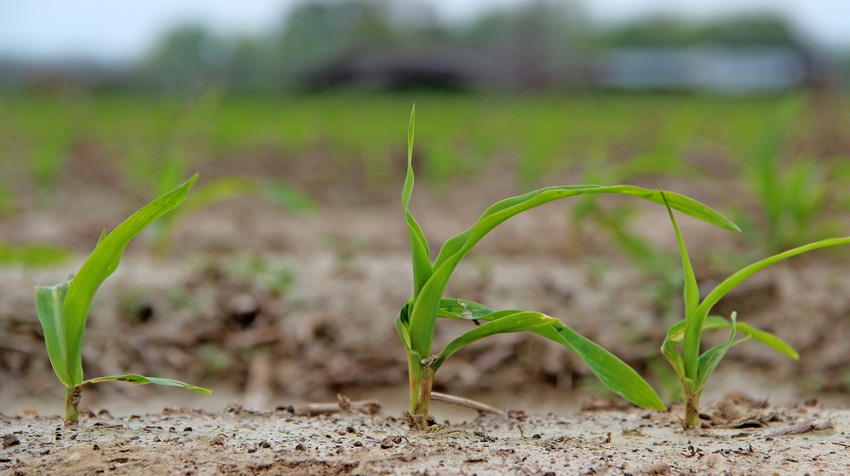February 10, 2021

Starter fertilizers are often part of a successful nutrient management strategy. See Strategies to Improve Corn Profitability for their potential in corn production. As with any fertility program, implementation of starters requires attention to detail.
Avoid fertilizer burn
Fertilizer burn may occur when fertilizers are applied with or near seed at planting. Many fertilizers are salts that dissolve into the respective ions in the soil water when applied. Think table salt, NaCl, which dissolves into the respective positive and negative ions Na+ and Cl- in water. This dissolution creates a pressure difference, so water moves from inside the plant roots to the surrounding soil (i. e. osmosis). Plants may wilt, become blackened, and die from the lack of water. This is called seed burn or fertilizer burn and may result in substantial stand loss.
Proximity is the key to susceptibility. Issues are rarely seen with broadcast application because the fertilizer is dispersed over a wide area. Likewise, starter fertilizer banded two inches over and two inches below is a method developed to avoid seedling contact, and rarely sees problems. However, low rates are key to control issues with in-furrow or ‘popup’ applications. No more than 10 pounds per acre of N and K2O combined should be applied in-furrow. Highly soluble fertilizers with low salt indices should be used for this placement, such as ammonium polyphosphate (10-34-0) or orthophosphates. Retailers and consultants should be familiar with appropriate materials for these applications.
Avoid ammonia toxicity
Additional injury risk exists from some nitrogen fertilizers than is anticipated by salt content alone if ammonia is released when they are soil applied. It is toxic and can enter plant cells freely. Urea, UAN, ammonium thiosulfate, and DAP present more ammonia-based problems than MAP, ammonium sulfate, or ammonium nitrate. Ammonia production can be accelerated by higher pH’s, either in the bulk soil or via reactions in the vicinity of applied fertilizer.
Soils and weather important
Soil conditions are important for determining why injury may occur some years and not others. Crop injury is most likely when seedlings grown in sandy, low organic matter soils are directly exposed to fertilizer. Dry weather will intensify injury potential. Fertilizer salts are diluted by diffusion away from the band in moist soils, but little diffusion occurs in dry soils. The concentrated fertilizer leads to more burn risk. Low cation exchange capacity (CEC) soils, those with coarse-textures and low organic matter contents, react less with the fertilizer than higher CEC soils (fine-textured). Soil temperature is also a part of the issue as roots grow slower in cold soils exposing them to the higher concentration of fertilizer longer.
Source: University of Arkansas Division of Agriculture, which is solely responsible for the information provided and is wholly owned by the source. Informa Business Media and all its subsidiaries are not responsible for any of the content contained in this information asset.
You May Also Like




